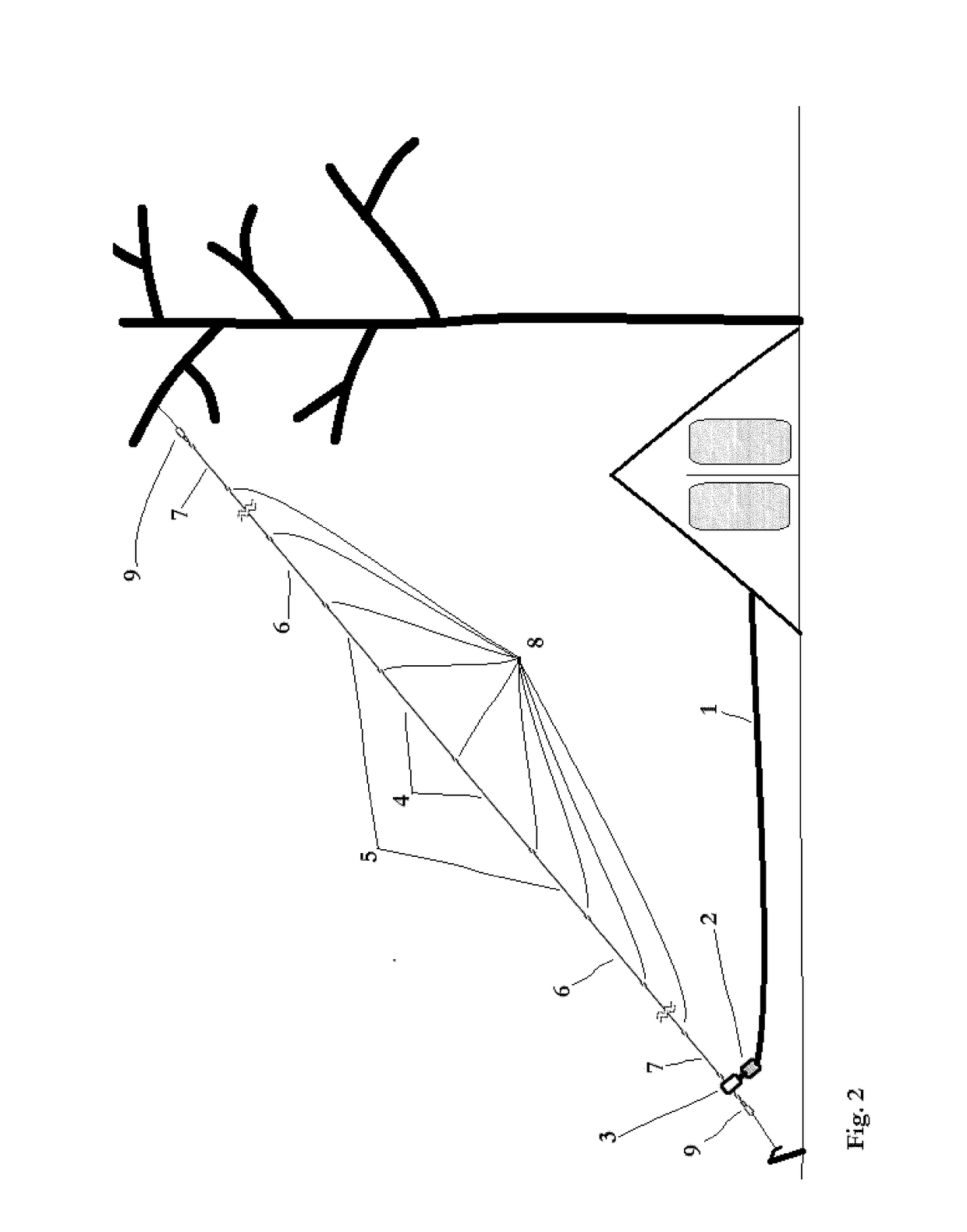Segmented variable-configuration radio antenna
a radio antenna and variable configuration technology, applied in the field of radio communication, can solve problems such as difficult or impossible conversion, and achieve the effects of high efficiency, fast and easy attachment or disassembly, and quick connection/disassembly
- Summary
- Abstract
- Description
- Claims
- Application Information
AI Technical Summary
Benefits of technology
Problems solved by technology
Method used
Image
Examples
example 1
[0034]A user who is communicating on 10 meter band using segment “A”, may switch to 15 meter band simply by snapping in place one or more additional wire segments (segment “B”) onto the end of their antenna. This additional segment would be trimmed such that, when combined with segment “A”, the overall antenna length is optimal for 15 meter band frequencies.
example 2
[0035]A user is hiking / camping cross-country. At site A, they are camped among tall trees and user has his antenna configured as center-fed with segments in place for efficiency on the 20 meter band. The next day, user hikes 10 miles to a site where there is only 1 tree and no other tall structures. User unsnaps his feed point from the middle of the antenna and snaps together the two polar segments of the antenna. She then quickly snaps her feed point onto the one end of the antenna and snaps a terminal connector (non-element, rope loop for hanging) on to the other feed point connector. User throws a weighted pilot string high up tree, connects rope and other terminal connector to other end of antenna and pulls one end of antenna high up into tree. The lower end of antenna is connected (insulated or not) to a spike in ground away from the tree. The result is a sloping end-fed dipole antenna.
[0036]In FIG. 1, there is shown the convertible antenna in a center-fed dipole configuration ...
PUM
 Login to View More
Login to View More Abstract
Description
Claims
Application Information
 Login to View More
Login to View More - R&D
- Intellectual Property
- Life Sciences
- Materials
- Tech Scout
- Unparalleled Data Quality
- Higher Quality Content
- 60% Fewer Hallucinations
Browse by: Latest US Patents, China's latest patents, Technical Efficacy Thesaurus, Application Domain, Technology Topic, Popular Technical Reports.
© 2025 PatSnap. All rights reserved.Legal|Privacy policy|Modern Slavery Act Transparency Statement|Sitemap|About US| Contact US: help@patsnap.com



